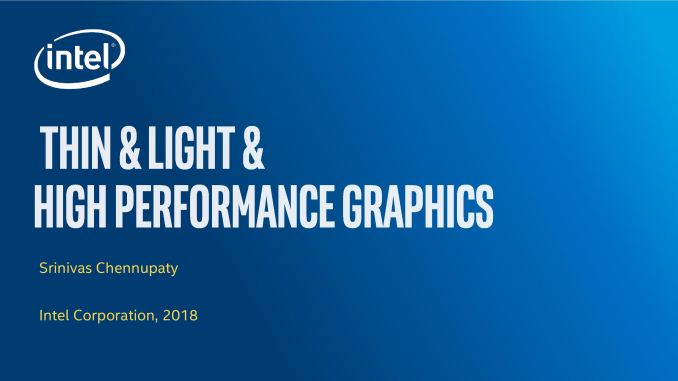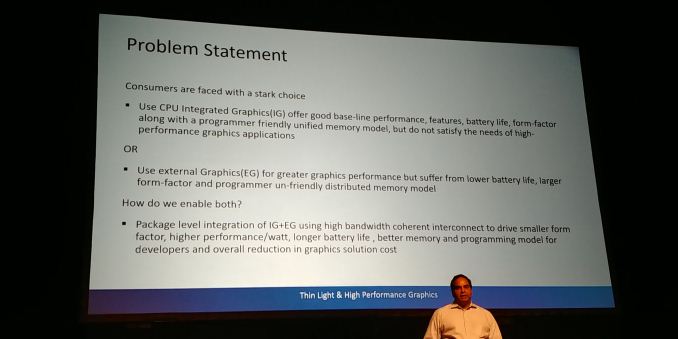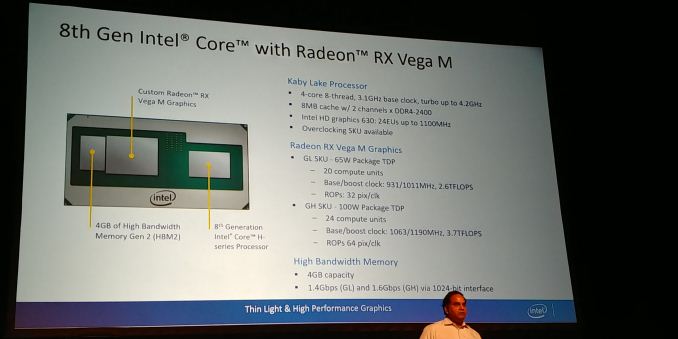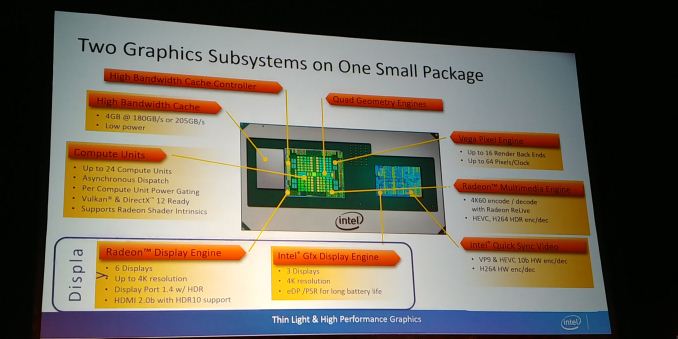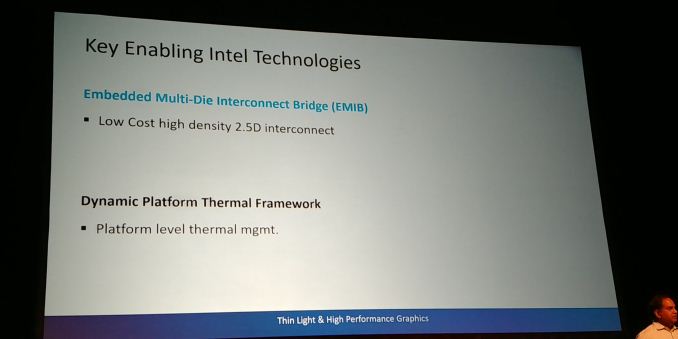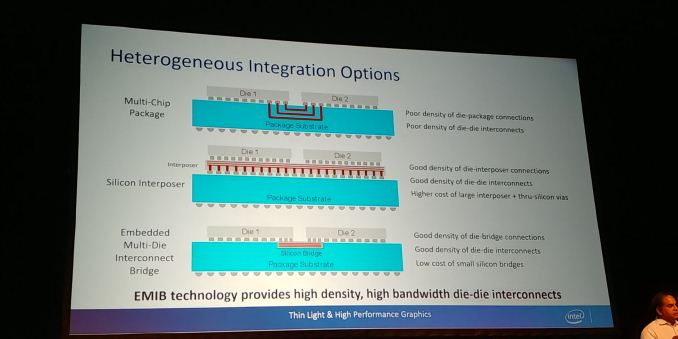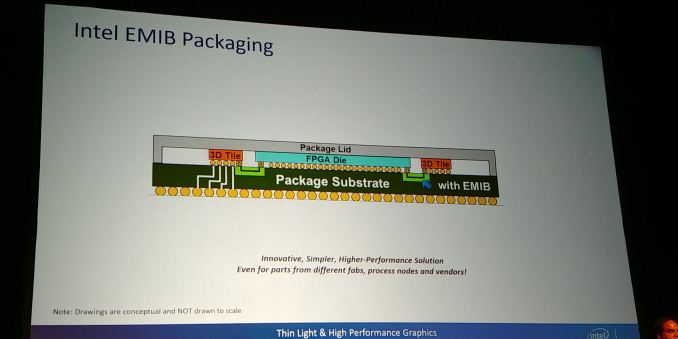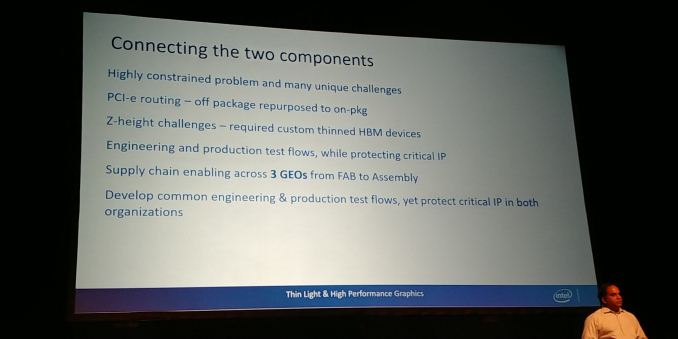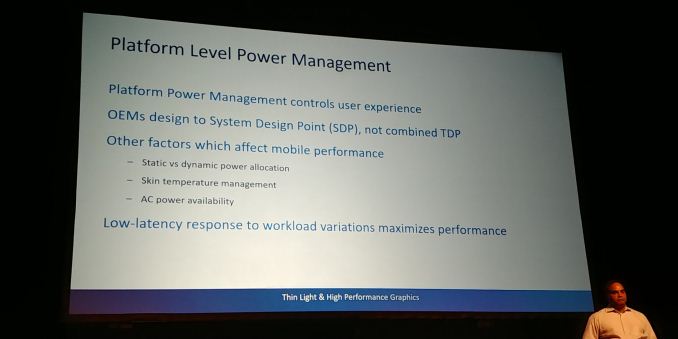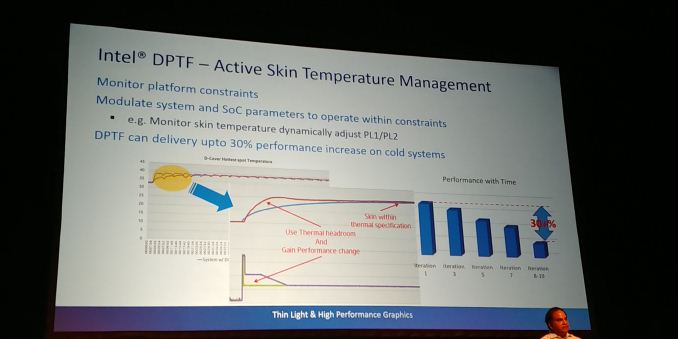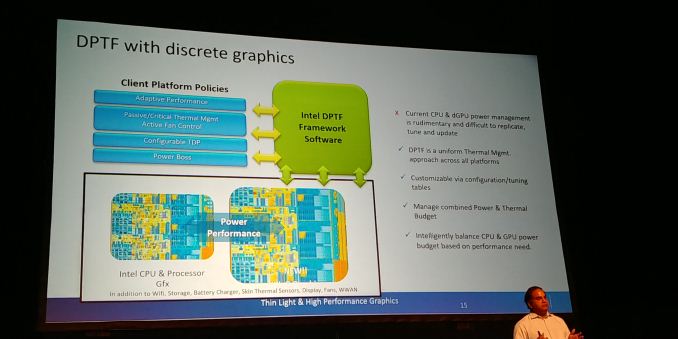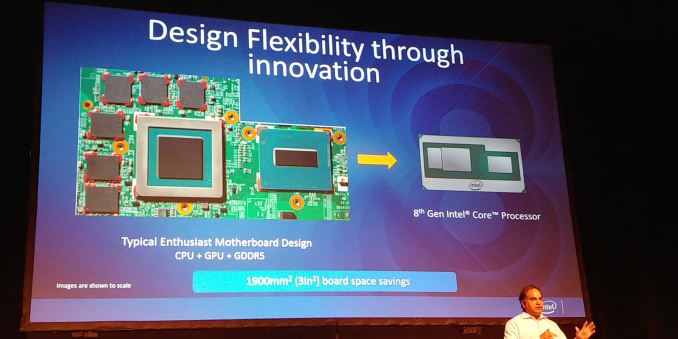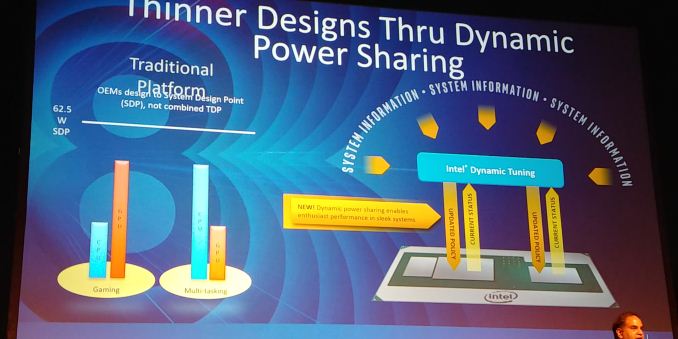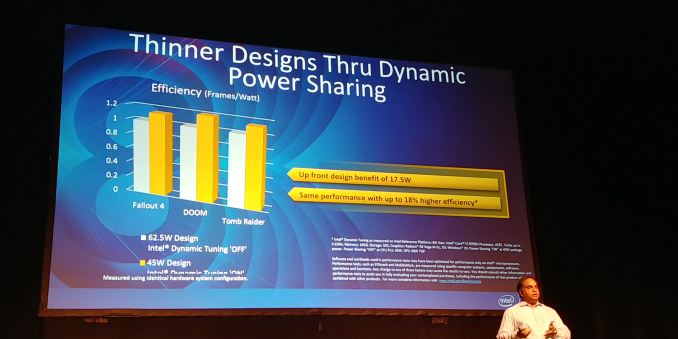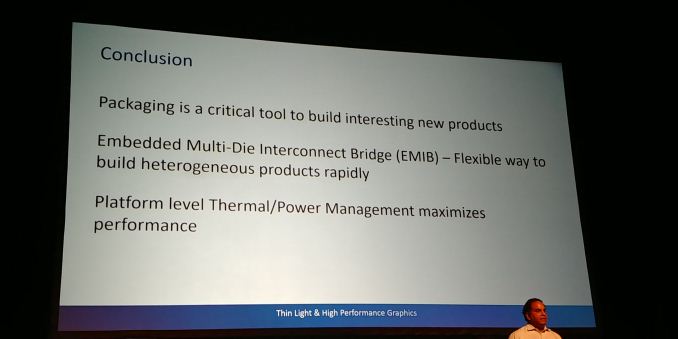
Original Link: https://www.anandtech.com/show/13242/hot-chips-2018-intel-on-graphics-live-blog
Hot Chips 2018: Intel on Graphics Live Blog (11:30am PT, 6:30pm UTC)
by Ian Cutress on August 20, 2018 2:25 PM EST- Posted in
- CPUs
- Intel
- Radeon
- Hot Chips
- GPUs
- Trade Shows
- Live Blog
- Vega
- RX Vega
- Kaby Lake-G
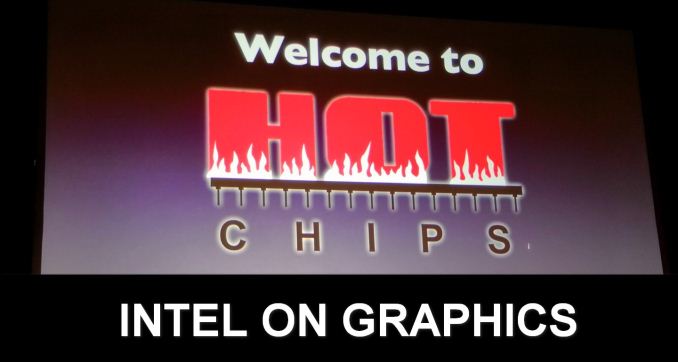
02:21PM EDT - Intel is talking graphics! We're expecting a lot of discussion about Kaby Lake G, with Radeon graphics, however the slide deck is going to talk a lot about power distribution methods in order to support the chip.
02:24PM EDT - Should start in a few minutes
02:30PM EDT - Presenter has worked on AES-NI and SSSE3
02:31PM EDT - Lead architect of Kaby G
02:31PM EDT - One of the most interesting products at Intel
02:32PM EDT - Combine high-end gaming with thin and light devices
02:32PM EDT - Aim to bridge the divide between thin and light and DTR
02:32PM EDT - A multi-generational project (!) (!)
02:33PM EDT - Kaby Lake-G
02:33PM EDT - About using multiple chips for an innovative product
02:33PM EDT - Kaby Lake processor, Radeon graphics, HBM2
02:34PM EDT - There's a framed version of the agreement with AMD at HQ
02:34PM EDT - HBM2 was customized to Intel's needs
02:34PM EDT - Enable VR in mobile form factor
02:34PM EDT - Mobile form factor meant no GDDR
02:35PM EDT - First high-volume mobile part with HBM
02:35PM EDT - 9 Displays
02:35PM EDT - NUC can access all these displays
02:36PM EDT - 'How did we make this happen'
02:36PM EDT - EMIB and DPTF
02:36PM EDT - Integration options
02:36PM EDT - MCP, Interposer, or EMIB
02:37PM EDT - Intel uses MCP for CPU to GPU, and EMIB for GPU to HBM
02:38PM EDT - For non-high density connectivity, use package. For density, use EMIB
02:38PM EDT - Large number of wires and data in low power with EMIB
02:39PM EDT - EMIB allows different geometries, different manufacturers, all in one package
02:39PM EDT - Several constraints
02:39PM EDT - Taking off-the-shelf components (minimal changes)
02:39PM EDT - Connections had to be PCIe
02:39PM EDT - in discrete form
02:40PM EDT - Normally routing length for PCIe is 8-inches
02:40PM EDT - Did a lot of simulation on 2 inches
02:40PM EDT - z-height challenges
02:40PM EDT - for heatsink
02:40PM EDT - HBM2 at 700 microns, taller than the other components
02:40PM EDT - had to be thinned in a custom manner for Intel
02:41PM EDT - Independent testing and then assembly
02:41PM EDT - 'Logistical Nightmare'
02:41PM EDT - Now Dynamic Platform Thermal Framework
02:42PM EDT - Power management controls UX
02:42PM EDT - OEMs design to SDP, not combined TDP
02:42PM EDT - Maximising perf while minimizing thermal issues
02:43PM EDT - Low latency too
02:43PM EDT - Everything is controlled to minimize power where it is not needed
02:43PM EDT - Keep power at peak given thermal contraints
02:44PM EDT - Depending on the starting thermals, more performance based on turbo
02:44PM EDT - Take advantage based on thermal characteristics
02:44PM EDT - Make sure CPU freq is scaled back if not needed
02:45PM EDT - Throttle back components that aren't needed for perf / workload
02:45PM EDT - Add discrete GPU like graphics into mix in thin and light
02:45PM EDT - provide hooks in the form of power budget for components to manage
02:46PM EDT - power policies can be used with the control mechanisms in the platform
02:46PM EDT - No shared interfaces between the parts
02:46PM EDT - Software power management solution
02:46PM EDT - Time constraints in seconds, so software is applicable
02:46PM EDT - 100ms control loop latency
02:47PM EDT - allows turbo similar to Turbo Boost 2.0
02:47PM EDT - Form factor allows the vendors to physically create thin+light or more performant form factors vs discrete graphics
02:47PM EDT - 4GB of HBM2, 1.7mm z-height
02:48PM EDT - Space savings vs GDDR5
02:49PM EDT - OEMs design for 62.5W SDP if this was traditional
02:49PM EDT - Not utilizing full spectrum of power
02:49PM EDT - No way to transfer power
02:50PM EDT - Now describing FIVR for single chip
02:50PM EDT - For discrete GPU, can't do FIVR
02:50PM EDT - but in a single package, can still power (but not as finely)
02:50PM EDT - Similar power sharing power methodology to FIVR at high level
02:50PM EDT - Up to the OEM to determine how to harness the capabilities
02:51PM EDT - design to a power, let the power sharing manage the rest
02:51PM EDT - Compare 15W i7-U plus GTX 1060 with 45W Kaby G with 55-65W Radeon
02:52PM EDT - New design allows Intel be more creative
02:52PM EDT - Faster time to market window
02:52PM EDT - From time made to decision to product was effectively 4.5 quarters
02:53PM EDT - Taking proven silicon and putting them together
02:53PM EDT - Had 90% perf on first boot, rest of tuning
02:53PM EDT - EMIB provides a path to higher bandwidth at lower pwoer
02:54PM EDT - Q&A Time
02:55PM EDT - Q: Have EMIB for HBM to GPU, but no EMIB from CPU to GPU?
02:55PM EDT - A: We use PCIe - doesn't need the density of EMIB for signalling, but you need it for HBM
02:56PM EDT - Q: GPU is Custom?
02:56PM EDT - A: We customized how the HBM interfaced with EMIB
02:57PM EDT - Q: EMIB for heterogeneous - only showing core to HBM. What's the plan for Core to Accelerator ?
02:58PM EDT - A: EMIB is technology - need to create a standardized ecosystem. Intel is actively working on this with DARPA Open Chips. But ecosystem requires a village, not one vendor. We're showing the potential, needs more players
02:59PM EDT - Q: Learned about integration - any more insights into same die ? A: Depends on wires being pulled out. High bandwidth is better on chip, need to evaluate ROI on power.
OK that's a wrap. Our next talk is AMD: https://www.anandtech.com/show/13243

